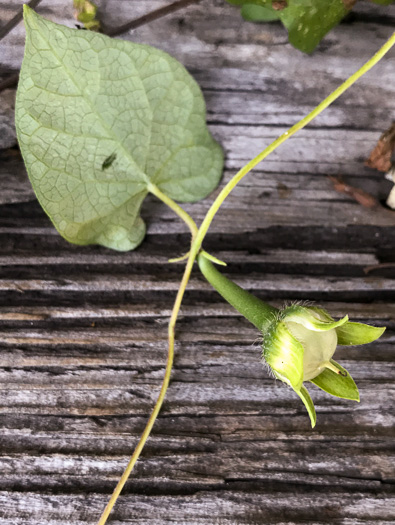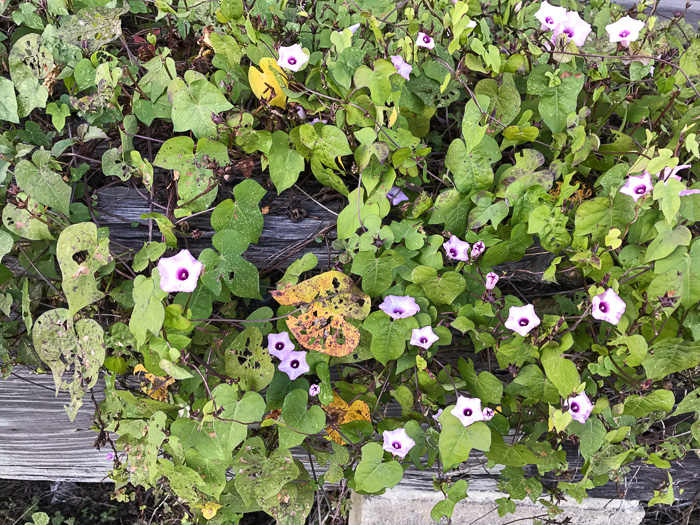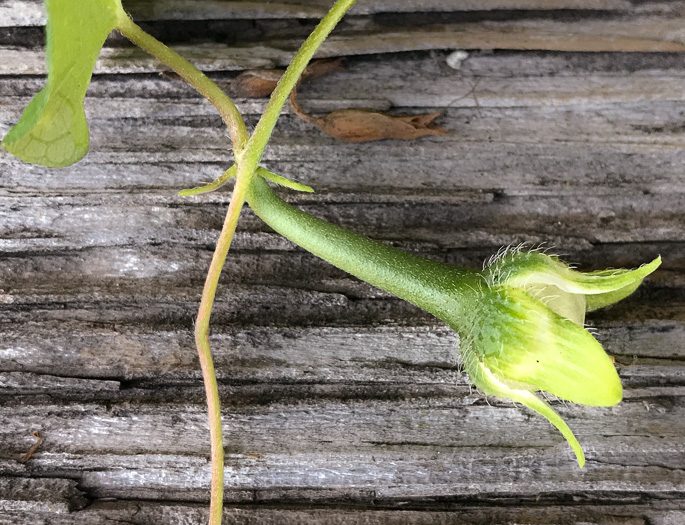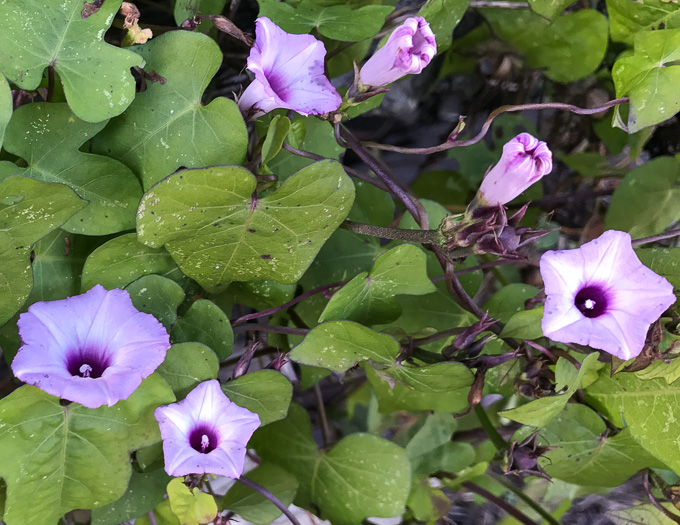Spermatophytes (seed plants): Angiosperms (flowering plants): Eudicots: Core Eudicots: Asterids: Lamiids: Solanales
WEAKLEY'S FLORA OF THE SOUTHEASTERN US (4/24/22):
Ipomoea triloba
FAMILY
Convolvulaceae
Go to FSUS key
Dig deeper at SERNEC, a consortium of southeastern herbaria.
This morning-glory has small flowers, the corollas only 3/5-1-inch long. Flowers are lavender-pink with a dark red center. The leaves are variable in shape; some are three-lobed, whereas others are cordate with no evidence of side lobes. Read more at Vascular Plants of North Carolina.
Check out EDDMapS.org to see where this has been reported.
SYNONYMOUS WITH
PLANTS NATIONAL DATABASE:
Ipomoea triloba
FAMILY
Convolvulaceae
SYNONYMOUS WITH Floristic Synthesis of North America. BONAP (Kartesz, 2021)
Ipomoea triloba
SYNONYMOUS WITH Guide to the Vascular Plants of Florida (Wunderlin & Hansen, 2011)
Ipomoea triloba
SYNONYMOUS WITH Manual of the Southeastern Flora (Small, 1933, 1938)
Ipomoea triloba
COMMON NAME:
Little-bell
To see larger pictures, click or hover over the thumbnails.
JK Marlow jkm181111__5881
November Williamsburg County SC
The leaves are variable in shape; some are three-lobed, whereas....
JK Marlow jkm181111__5886
November Williamsburg County SC
...others are cordate with no evidence of side lobes, per Vascular Plants of North Carolina.
JK Marlow jkm181111_5878
November Williamsburg County SC
Vines are highly twining so appear much shorter than they are, per New Invaders of the Southeast (Rawlins et al., 2018).
JK Marlow jkm181111_5883
November Williamsburg County SC
Sepals 5-7 mm long, oblong, per Weakley's Flora (2023).
JK Marlow jkm181111_5889
November Williamsburg County SC
Flowers vary in color from white to pink to pale purple and have darker centers, per New Invaders of the Southeast (Rawlins et al., 2018).
WEAKLEY'S FLORA OF THE SOUTHEASTERN US (4/24/22):
Ipomoea triloba
FAMILY
Convolvulaceae
SYNONYMOUS WITH
PLANTS NATIONAL DATABASE:
Ipomoea triloba
FAMILY
Convolvulaceae
SYNONYMOUS WITH
Floristic Synthesis of North America. BONAP (Kartesz, 2021)
Ipomoea triloba
SYNONYMOUS WITH
Guide to the Vascular Plants of Florida (Wunderlin & Hansen, 2011)
Ipomoea triloba
SYNONYMOUS WITH
Manual of the Southeastern Flora (Small, 1933, 1938)
Ipomoea triloba
If a search such as "Carex leptalea var. leptalea" doesn't deliver the results you want, try "Carex leptalea".
Or, to minimize chances of a misspelling, try just "Carex le".
Less is more: If "pencil flower" doesn't deliver the results you want, try "pencil".






